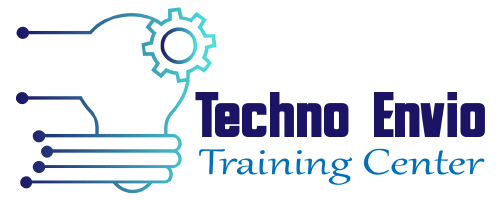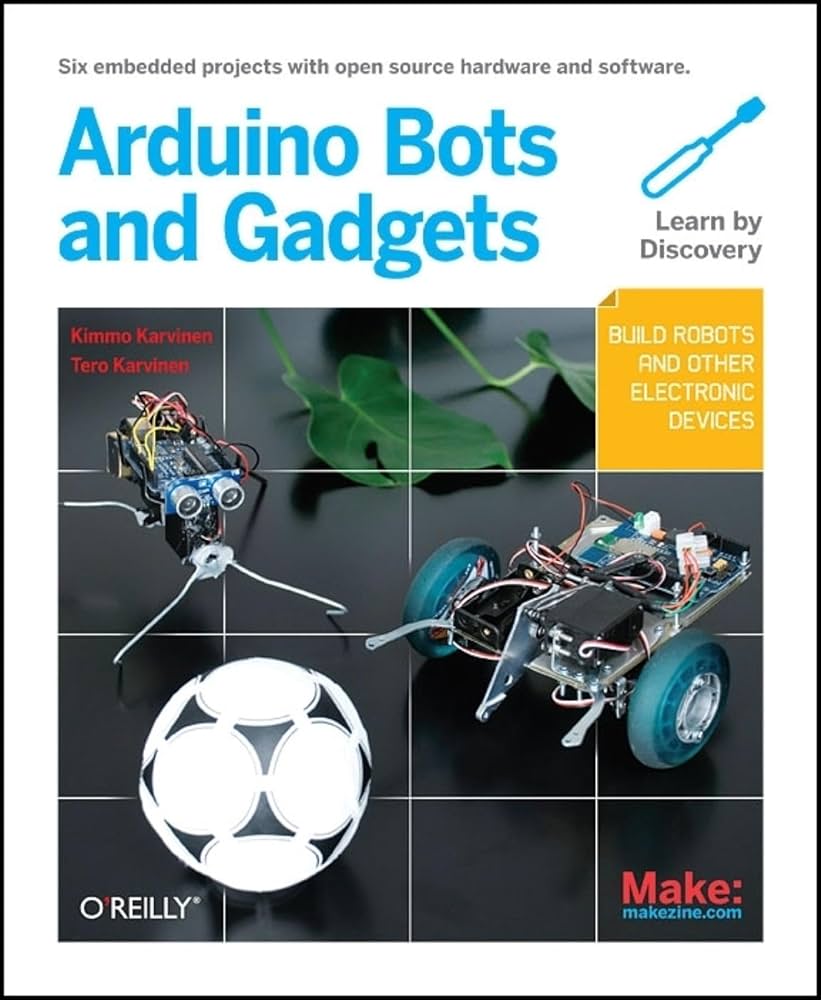Arduino Projects Bots and Gadgets: Six Embedded Projects with Open Source Hardware and Software
Arduino Projects, do you want to build your own robots? convert your ideas into prototypes, use a computer to control gadgets, or create your own mobile apps? With this post and the Arduino open source electronic prototyping platform, it’s a piece of cake. Begin with six enjoyable assignments and rapidly attain amazing results. Learn how to create your own interesting devices by gaining knowledge and expertise.
Building your own embedded gadgets is simple using Arduino, even for beginners. Embedded systems can be found in automobiles, children’s toys, and mobile phones.
This post will teach you the fundamentals of embedded systems and guide you through the process of creating your own gadget in only a few days. Following that, each learn-as-you-build project will add to your knowledge and abilities. Experiment with the popular Arduino microcontroller board. With easy-to-follow instructions, you can make robots and electronic projects. Convert your concepts into actual prototypes that can be tested. In your projects, use Android phones as remote controllers. Use an easy-to-learn programming language designed for artists, designers, and hobbyists. Involve everyone with tasks that even novices can do.
The final objective of this post is to show you how to use Arduino to construct prototypes. We’ll provide you just enough theory to let you put your new abilities to work on your own projects. You’ll also learn how to understand the rationale behind code and components. Every line of code will be explained, as well as how each component is utilized. You will learn through working on real projects, and the information you obtain will allow you to develop your own ideas further.
The majority of posts on embedded systems are either too specialized to be entertaining or too basic to be fascinating. We want to encourage a deeper knowledge and a skill set that can be used more flexibly. Many beginner posts just educate you to mindlessly follow instructions; here, we want to foster a deeper understanding and a skill set that can be applied more flexibly.
Finally, this post is intended for readers who wish to learn how to create prototypes of intriguing devices rather than a dental X-ray machine or a microwave oven. At the same time, you’ll be able to use the post ‘s techniques to create prototypes of commercial device designs.
Why Arduino?
Basic Stamp and Arduino are the best microcontroller alternatives for a novice. Basic Stamp has been around since the early 1990s and has grown in popularity among enthusiasts. It employs the Basic programming language, which is simple to use but relatively restricted in comparison to Arduino’s use of the C language.
Arduino is functionally comparable to Stamp, but it eliminates many of the difficulties that Stamp has typically encountered. The basic Arduino beginning package is around a fourth of the price of a comparable Stamp kit, which is a key benefit for enthusiasts. Moreover, despite its lower price, Arduino features a faster CPU and greater memory. Arduino is also smaller than Stamp, which is useful in a variety of tasks. The Arduino Uno (shown in Figure 2-1, left) is slightly smaller than the Stamp, but the tiny Arduino Nano (shown in Figure 2-1, right) is almost the same size as the Stamp module that fits on the Stamp board (just above the serial port in Figure 2-2).
Figure 2-2 displays the Stamp and the Nano side by side for comparison.

Figure 2-1. Arduino Uno (left) and Arduino Nano (right)

Figure 2-2. Basic Stamp (left) and Arduino Nano (right)
One other advantage is that the Arduino programming environment is open source and can be installed on Windows, Mac OS X, and Linux.
Starting with Arduino Projects
There are several types of Arduino available. This book focuses on the previously stated Arduino Uno and Arduino Nano. The most recent version of the board is Uno, which is a low-cost (about $30) and robust basic variant. It was publicly published in September 2010 and is the successor to the Arduino Diecimila and Duemilanove. Nano is much smaller, but it is more brittle and slightly more costly ($35). Both models are discussed in further detail towards the end of this chapter. First, you must get an Arduino and a USB cord that is compatible with it. The Uno and Nano are connected to your computer through USB (for uploading new programs or sending messages back and forth). They can also obtain electricity through USB.
The Uno utilizes a USB-B cable, while the Nano uses a Mini-B cable, and both connect to the computer through a USB-A male connection. Figure 2-3 depicts all three connections.

Figure 2-3. Arduino USB cables: Mini-B, USB-A, and USB-B
How to Install Arduino Projects Software
Then, for your operating system, install the Arduino programming environment and compile the first test program. The most critical aspect of getting started with a new device is the “Hello World” code. The rest is straightforward after you’ve mastered compiling basic, light-blinking code in Arduino. The examples in this book were evaluated using the Arduino development environment version 0021. If you want to use a different version, the installation procedure may change.
If you’re using a different operating system than Windows, Ubuntu Linux, or Mac OS X, or if you’re using an Arduino other than the Uno or Nano, seek for installation instructions.
Windows 7
Here’s how to get started with Windows 7:
1. Download the Arduino development environment from the Internet and unzip it to the specified folder by selecting “Extract all” from the right-click menu.
2. Connect the USB cord to your computer and the USB port on the Arduino.
The LED on the Arduino should be green.
3. Windows will automatically look for and install the required drivers. It will notify you when the installation is finished. If Windows is unable to locate the driver:
a. Launch Device Manager by going to the Start Menu, selecting Computer, right-clicking it, selecting Properties, and then selecting Device Manager from the list of options on the left.
b. Look for the Arduino Uno in the list of devices (it should be in the Other Devices section). Select Update Driver Software from the context menu.
c. Select “Search my computer for driver software.”
d. Navigate to the unpacked Arduino folder, pick the drivers subfolder, and press Next.
e. If requested to install this driver, choose “Install this driver software anyway.”
When the driver is successfully installed, the window displayed in Figure 2-4 will appear.

Figure 2-4. Drivers installed
Windows XP
In general, most Windows XP apps install similarly to Windows 7, with the exception of Arduino. If you’re using Windows XP, begin by downloading the Arduino development environment, extracting the file to a spot on your computer, and connecting the Arduino to your computer as stated in the previous section. Then perform these extra steps:
1. The Found New Hardware Wizard is launched by Windows.
2. In the box, select “Install from a list or particular location” and hit Next.
3. Uncheck the “Search removable media” checkbox and tick the “Include this location in the search” box. Navigate to the extracted Arduino folder, pick the drivers subfolder, then push Next. If you’re using an earlier Arduino model, such as the Nano, you may need to choose the drivers/FTDI USB Drivers subfolder instead.
4. Click the Finish button.
Ubuntu Linux
Although graphical user interface tools may be used to install Arduino on Ubuntu and other Linux environments, the following procedures use the Terminal (Figure 2-5) to simplify the instructions.
Select Applications→Accessories→Terminal to launch the Terminal. The dollar symbol at the start of the following command lines is the computer’s command prompt; do not input the dollar sign, just the letters that follow it.
We tried this installation method using Ubuntu 9.04, but it should work (with slight changes) with other versions as well.

Figure 2-5. Command line
Begin by utilizing the universe program repository, which contains free, open source software with openly available source codes:
$ sudo software-properties-gtk –enable-component=universe
When sudo prompts you for your password, enter it. The command that follows sudo will be run with root user capabilities.
Update the list of available software:
$ sudo apt-get update
It’s now time to install dependencies, which include all of the applications required for the Arduino development environment to operate, such as Java (openjdk) and programming tools for the AVR chip, such as gcc-avr, avr-libc, and avrdude. The 32-bit compatibility library ia32-libs is also required for new 64-bit machines.
$ sudo apt-get install –yes gcc-avr avr-libc avrdude openjdk-6-jre
$ sudo apt-get install –yes ia32-libs
Then, from the official Arduino home page on internet, download and run the Arduino development environment, which comes in two flavours: “Linux (32bit)” and “Linux (AMD 64bit).” 64-bit technology is used in newer systems. If you’re not sure which package to download, use the uname-m command to see if your machine is a newer 64-bit (x86 64) model or an older 32-bit one (i386).
Uncompress the downloaded software package (this will create an arduinoversion directory in your current working directory):
$ tar -xf ~/Downloads/arduino-*.tgz
Begin by launching the Arduino developer environment. Because the command will be run from a specific folder, specify the full path to that folder:
$ ./arduino
The Arduino development environment will be launched.
Mac OS X
Here’s how to get started with Mac OS X:
1. Download and open the.dmg file of the Arduino development environment from Internet.
2. A new Finder window with three icons emerges (Arduino, a link to your Applications folder, and the FTDI USB serial driver package).
3. Move the Arduino icon to your Applications folder by dragging it there.
4. Install the FTDIUSBSerialDriver package if you are using an earlier version of Arduino than the Uno.
5. When you connect the Arduino, the message “A new network interface has been recognised” may appear. Click Network Preferences, then Apply. When you’re finished, you may close the Network Preferences window.
Next post about “Hello World with Arduino” & Structure of “Hello World”
To be continued….


Interesting in this. I love engeraring